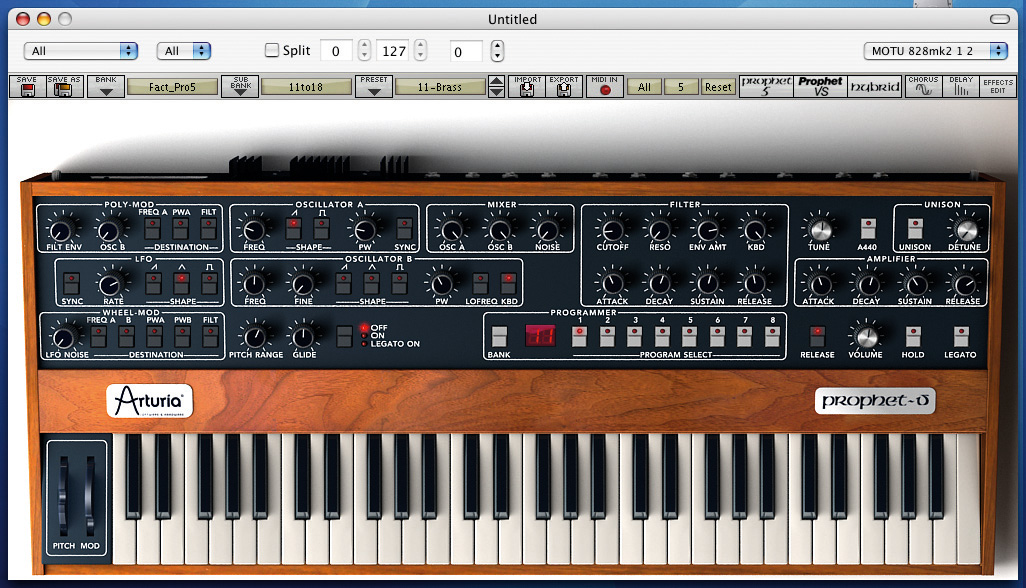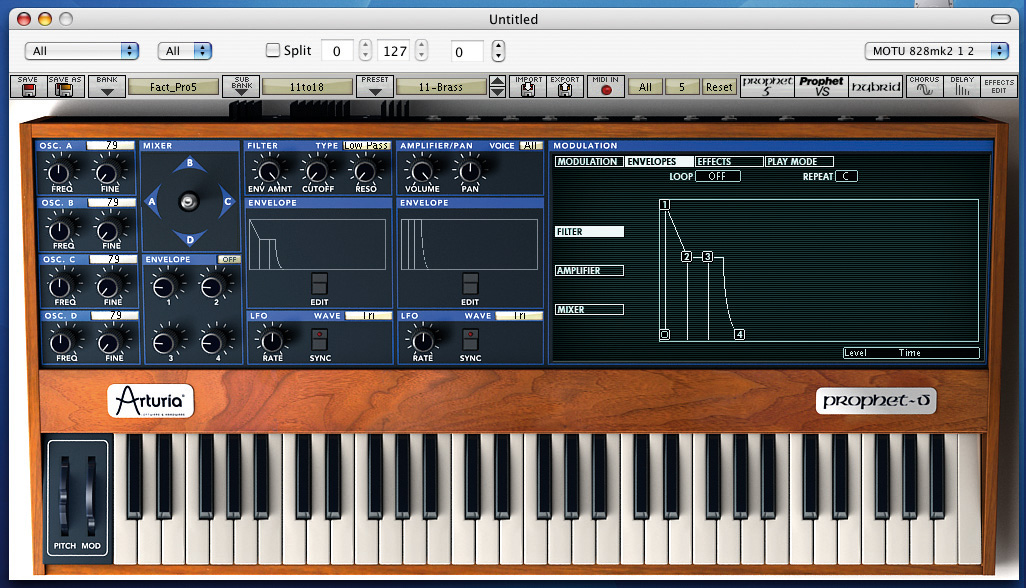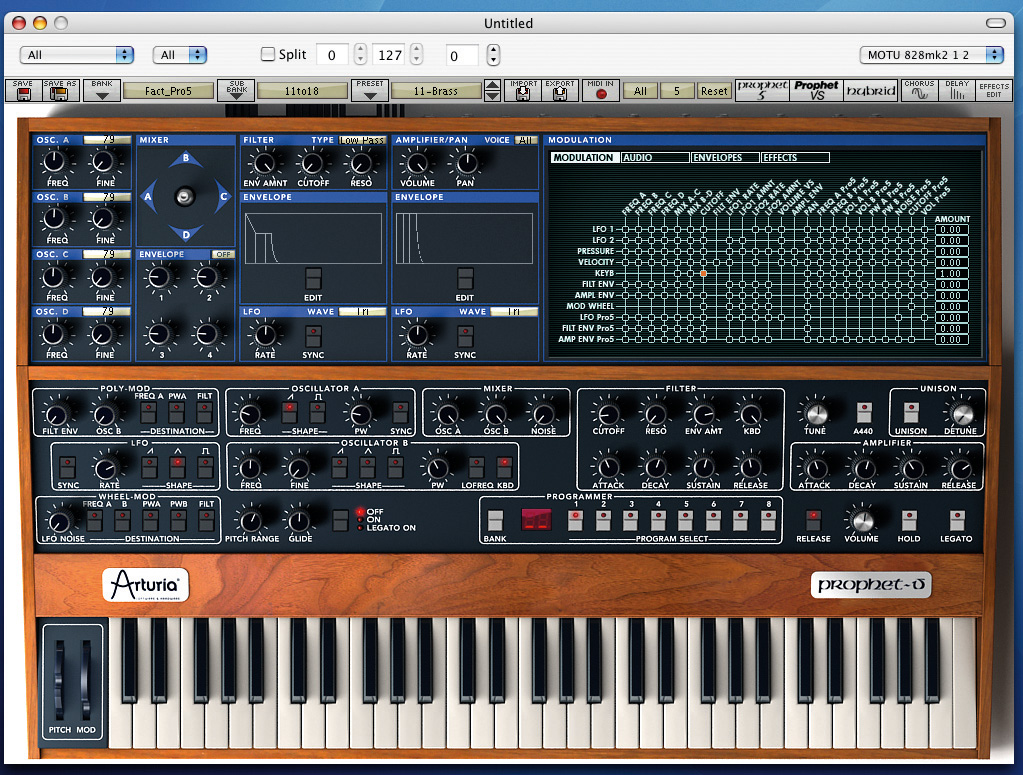MusicRadar Verdict
Arturia have created another great synth, but it places a serious amount of load on your computer. Consider your options carefully.
Pros
- +
Realistic emulations of two classics. Hybrid mode sounds absolutely fantastic. Decent selection of presets.
Cons
- -
Volume discrepancies between patches. Incredibly CPU-hungry. Sluggish behaviour. Dongle crashed our Mac.
MusicRadar's got your back

It's another virtual Prophet V

It's also a virtual Prophet VS

And there's hybrid mode too!
In the world of classic hardware synthesizer emulation, Arturia have always been ahead of the game. They were the first to recreate the famed Yamaha CS series, the first to release a native plug-in version of the ARP 2600, and the first to get Robert Moog's blessing to create his synths in software.
Considering the company's track record, we must confess to being a bit befuddled by the new Prophet V. Initially conceived as a spot-on recreation of Sequential Circuits' venerable Prophet 5, it's been turbo-charged with a not-so-accurate recreation of the same company's later vector synth, the Prophet VS.
It's worth mentioning that reasonable software versions of both instruments already exist. Native Instruments gave us a decent Prophet 5 six years ago, and have since improved it several times. In addition, there's a very accurate clone of the Prophet VS in the shape of General Vibe's Vector Sector.
With all this in mind, it's hard not to question the need for a product such as the Prophet V. It certainly has a lot to live up to.
The Prophet V is a cross-platform instrument that runs standalone or as a VST, DX, AU or RTAS plug-in. It demands a respectable 1.5GHz CPU, and it can eat up a considerable portion of that processing power.
This is particularly true when operating in hybrid mode, which combines the Prophet 5 and Prophet VS instruments together.
We're not thrilled to report that some hybrid chords used up to 69% of the resources of our dual 2GHz G5 Power Mac… and that's when we were using the Prophet V standalone!
We were unable to play even a note or two of certain hybrid patches while using the instrument as a plug-in (in Cubase SX 3), which is not good.
The Prophet V is copy protected via a Syncrosoft USB dongle. In fact, you can't even try the demo without installing the dongle.
If you don't have one, Arturia will gladly sell you one and reimburse you upon the demo's expiration, but our suspicion is that few non-Syncrosoft users will bother. We also have to say that the dongle crashed the Prophet on our Mac on more than one occasion.
Sounds
When you first open the Prophet V, you're greeted by a photorealistic representation of the original Prophet 5 hardware (there's even a heat sink protruding from the top of the GUI).
The look isn't all that have Arturia nailed: the sound is very convincing, although we'd be hard-pressed to say which Rev we were hearing.
The two banks of presets that are copied from Sequential's own factory patches have all of the character that made the real thing a best seller.
All the old favourites are here - beefy basses, swept sync leads and goofy effects - and they come courtesy of the now-familiar Prophet signal path.
There's a pair of syncable oscillators, a 24dB resonant filter, a couple of envelopes and an LFO. Most importantly, the Prophet V offers the notorious 'cross mod' functions of the original (these account for its popularity as a provider of unusual special FX).
The VS model features all of the original's wavetables and its vector joystick, which can be used to blend the four selectable waveforms.
However, Arturia have upped the ante a bit by providing a selectable multimode filter. Again, all of the authentic factory patches are here, so you get oh-so-80s choirs, ringing bells and sweeping vector pads.
How does it compare?
If we were judging the two emulations individually, we'd say that we actually prefer the VS. Let's face it: analogue polysynths are a dime a dozen, and many of them boast the features that originated on the P5.
However, the crystalline, digital timbres offered by the VS represent a nice change - just as they did when the real synth was released during Sequential's death throes.
Ultimately, though, the real power of the Prophet V lies in its ability to mix and match the two vintage models.
For example, you can sync the VS oscillators to the Prophet 5's, and the modulation matrix combines sources and destinations for both instruments.
When you throw the built-in chorus and delay effects into the mix, you get an instrument that's far greater than its combined constituent components.
As powerful as the Prophet V is, it's not without problems. There are a lot of volume discrepancies between patches and we heard a few clicks at the beginning of some sounds.
We've already discussed the CPU consumption, but we also feel that the overall performance can be very sluggish at times, especially when changing between different modes.
At the end of the day, the Prophet V sounds very good indeed, but you should fully explore the alternatives before you shell out for it.
Computer Music magazine is the world’s best selling publication dedicated solely to making great music with your Mac or PC computer. Each issue it brings its lucky readers the best in cutting-edge tutorials, need-to-know, expert software reviews and even all the tools you actually need to make great music today, courtesy of our legendary CM Plugin Suite.
“Every one of them said yes without hesitation": Hank Marvin and Roger Taylor have just remade a '60s classic for charity
Do you know where your money goes when you buy a gig ticket? A new report breaks it down
“Every note counts and fits perfectly”: Kirk Hammett names his best Metallica solo – and no, it’s not One or Master Of Puppets










